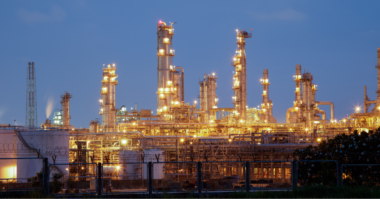Discover how United Electric Controls’ advanced instrumentation technologies can optimize leak detection capabilities in LNG facilities with this insightful two-part blog post. This first part reviews some considerations for a systematic instrumentation approach to detect leaks in LNG storage tanks.
Oil and chemical operators have been adopting a systematic approach to process safety and risk management for many years, guided by two international functional safety standards: IEC 61508 ‘Functional safety of Electrical/Electronic/Programmable Electronic Safety-related Systems’ and IEC 61511 ‘Functional safety – Safety Instrumented Systems for the Process Industry Sector.’
Relevant Standards
LNG facilities are adopting similar functional safety principles, especially in the area of leak detection. Prescriptive and other worldwide standards relating to LNG design, construction, equipment and processes also support a systematic approach expressed in IEC’s functional safety standards. For example, EN 1473 – the European standard for ‘Installation and Equipment for Liquefied Natural Gas – Design of Onshore Installations’ references both IEC 61508 and IEC 6151 standards. The US standard NFPA 59A ‘Production, Storage, and Handling of Liquefied Natural Gas (LNG)’ empowers alternative approaches in addressing the safety of processes and equipment as long as these designs are approved by the authority having jurisdiction.
Considerations for a Systematic Approach
One main consideration is for LNG operators to develop a Functional Safety Management Plan (FSMP). Many LNG projects have multiple vendors with different safety approaches and unique products. According to these experts, this can lead to an inconsistent risk profile for the facility. LNG operators must first align technology providers early in the design phase. Missing this step can lead to “costly redesign, start-up delays and unmitigated risk exposure.”
Secondly, it is recommended for the LNG operator to methodically select the appropriate sensors and final elements for the application and the environment, including meeting the defined safety integrity level (SIL) for a given function. Functional safety standards equate the SIL with how much risk reduction is expected and achieved. The user should build a safety case, calculating probability of failure (PFD) in an example SIF in order to establish SIL capability, and consider other limits including fault tolerance, architectural constraints, proof testing and system restoration requirements. Sensors and final elements should not be an arbitrary selection, but systematically evaluated to fulfil the required SIL.
Manufacturers of safety instrumentation like United Electric Controls are contributing to the overall effort by designing certified products and safety systems in compliance with IEC 61508. Product certification is a clear way of proving that equipment satisfies the applicable functional safety standards, making it easier for the LNG operator to evaluate as part of the FSMP and equipment selection.
In their next blog post, UE Controls will look at how UEC’s SIL Certified Safety Temperature Transmitter with Safety Relay Output enabled an LNG operator to achieve faster leak detection system response times and greater risk reduction.





Comments